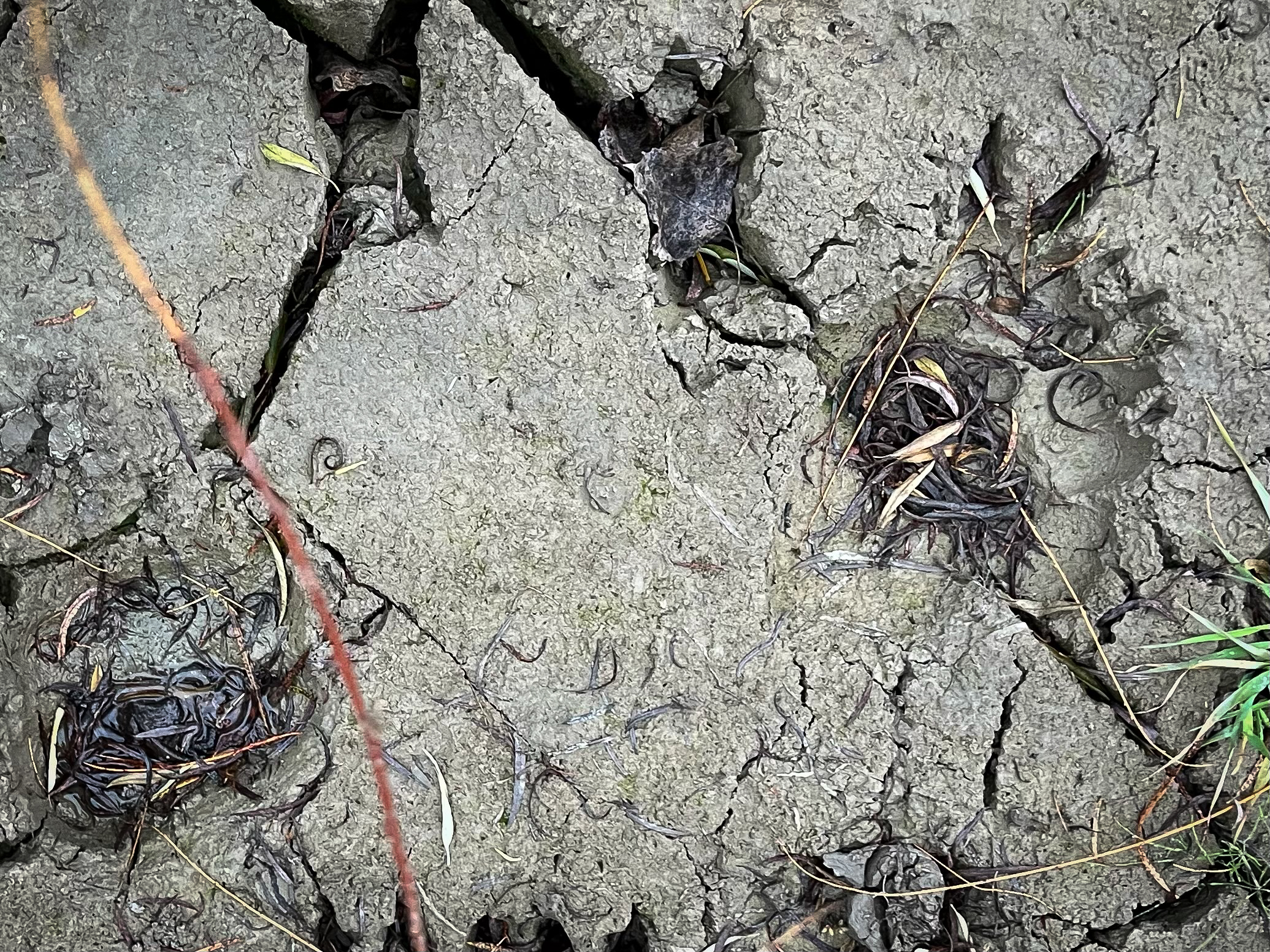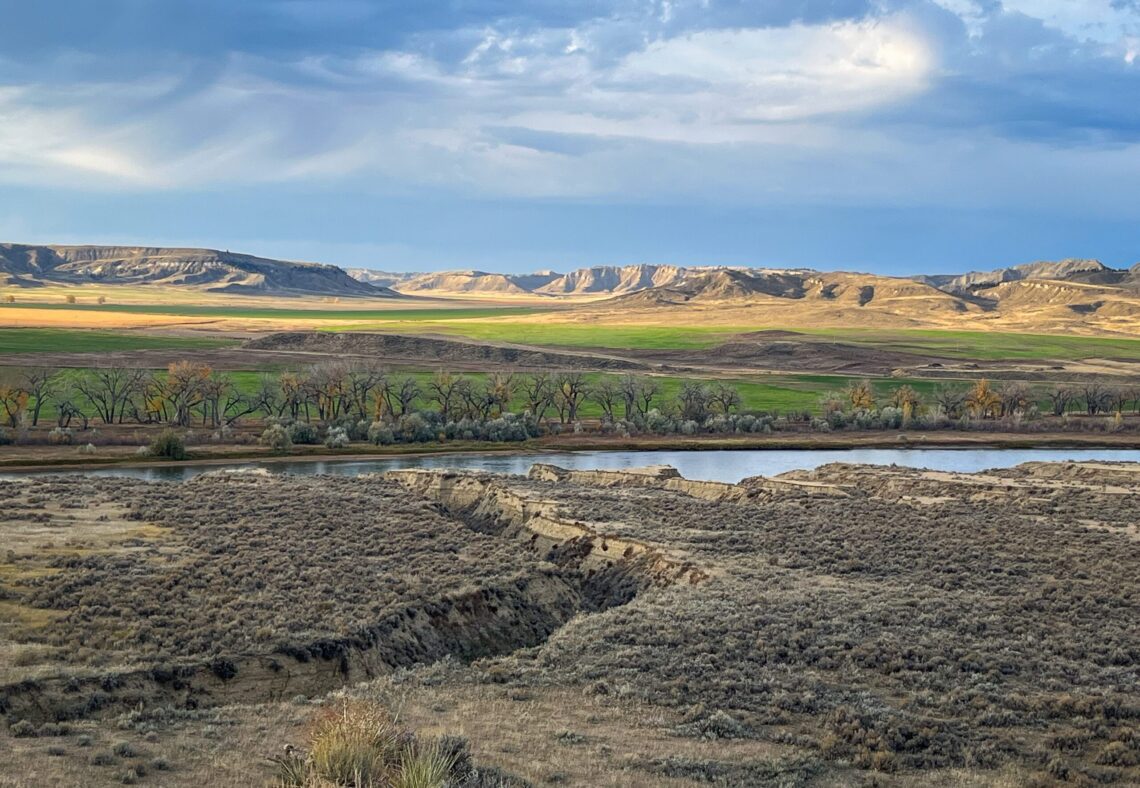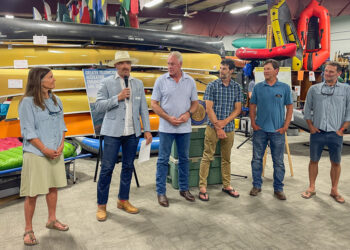By Benjamin Alva Polley EBS COLUMNIST
This past October, I was invited to go hunting with family and friends at the American Prairie Reserve. We stayed at the accommodating PN Ranch for three nights. It was my first time tromping around with a rifle along the Missouri Breaks and Judith Basin. I sat on buttes and mesas above coulees, glassing for deer, waiting for them to stir from their daybeds where they hid under Douglas firs and junipers, then rise at dusk or dawn and walk through sagebrush to cottonwood galleries lining the Judith River. The weather grew incredibly moodier daily, starting with that Sunday afternoon in the high 50s. A melancholy Monday rained all day with temps dropping into the 30s and low-level fog covering everything. Tuesday’s temperatures dropped into the 20s, and Wednesday brought ten inches of fresh snow, 35 mph winds, and temps falling to single digits. The area teemed with wildlife of all sorts. We had run-ins with elk, mule deer, whitetail deer, coyotes, and predator tracks. Some of us were fortunate.
Tuesday morning, I walked upriver, following game trails through thick willows. The willows crowded me, making me feel claustrophobic, so I dipped toward the river, hoping to see how long this willow stand would last. Down at my feet in the mud were the unmistakable tracks of a grizzly covered in leaf litter next to a mountain lion track.

My heart skipped a beat. Adrenaline jolted through my body. I was excited they had made it this far east, but I didn’t want to surprise one in these thick willow river bottoms. I snapped photos on my phone, then backtracked out how I came and hunted more in the open prairie bottoms under giant cottonwoods the rest of the day.
When we returned home, I contacted Michael Ferda, manager of PN Ranch, and emailed him the photos and location. In a voicemail on Nov. 1, he said, “We have a couple of game cameras out trying to get pictures. No one’s got an eyeball on him, but we have seen tracks.”
On Nov. 15, the American Prairie Reserve sent out news bulletins showing photos of the grizzly they captured on remote cameras in October.
This is the first evidence of a grizzly bear in the Missouri Breaks in over a century. As grizzly populations expand, more and more explorer bears like this one are on the move, trying to find a home. Biologists say young males usually wander far and wide, looking for territories with enough habitat, food, and mates. This bear traveled the gauntlet past highways, chickens, and cattle ranches to make it a hundred miles from the Northern Continental Divide Ecosystem’s population.
The American Prairie Reserve has thousands of acres of public lands, including large continuous Bureau of Land Management blocks like the 375,000-acre Upper Missouri River Breaks National Monument and the U.S. Fish and Wildlife Service’s 1.1-million-acre Charles M. Russell National Wildlife Refuge, and state lands. APR has purchased 462,000 acres in the region to restore the shortgrass prairie ecosystem and hopes to return all of the native wildlife that comes with it.

Historically, grizzlies lived from the Pacific Ocean to the Mississippi River and from Mexico to Alaska. The Lower 48 states boasted around 50,000 bruins. They were more of a Great Plains animal until settlers and fur trappers hunted them to near-extinction and pushed them to 2% of their former range, where they had to eke out an existence in remote Montana and Wyoming mountainous areas. Today, their population sits at around 2,000. Female grizzlies require 50 to 300 square miles of habitat, and males need 200 to 500 square miles.
The American Prairie Reserve is a conservation success story. The area is also home to antelope, bighorn sheep, black bears, 900 bison, and at least one lone grizzly. But only some people are excited about APR or grizzlies. Many agricultural ranches are skeptical about their plans and don’t like that an out-of-state organization is buying up a bunch of land.
“I’ve been dreaming about this moment since the day I started at American Prairie almost six years ago,” wrote Daniel Kinka, APR wildlife restoration manager, in a recent email. “Some of us for much longer. Other than bison roaming, I don’t think there is any better symbol of prairie wildness than a grizzly bear.”
This is a monumental moment in rewilding the landscape and making the American Prairie’s vision a reality. They have sought to restore the role of large carnivores in this ecosystem for more than 20 years since they first became an organization. They and many wildlife lovers would love to see more and more grizzlies and wolves make it out to the plains, where each species can have a self-sustaining population. This is just one step to make a healthy and whole ecosystem.
Only time will tell how long it takes for more grizzlies to survive the gauntlet of cattle ranches, chickens and roads by migrating eastward and once again occupying this place that was once home to their ancestors.
Benjamin Alva Polley is a place-based storyteller with stories published in Outside, Adventure Journal, Popular Science, Field & Stream, Esquire, Sierra, Audubon, Earth Island Journal, Modern Huntsman, and other publications at his website www.benjaminpolley.com/stories. He holds a master’s in Environmental Science and Natural Resource Journalism from the University of Montana.















